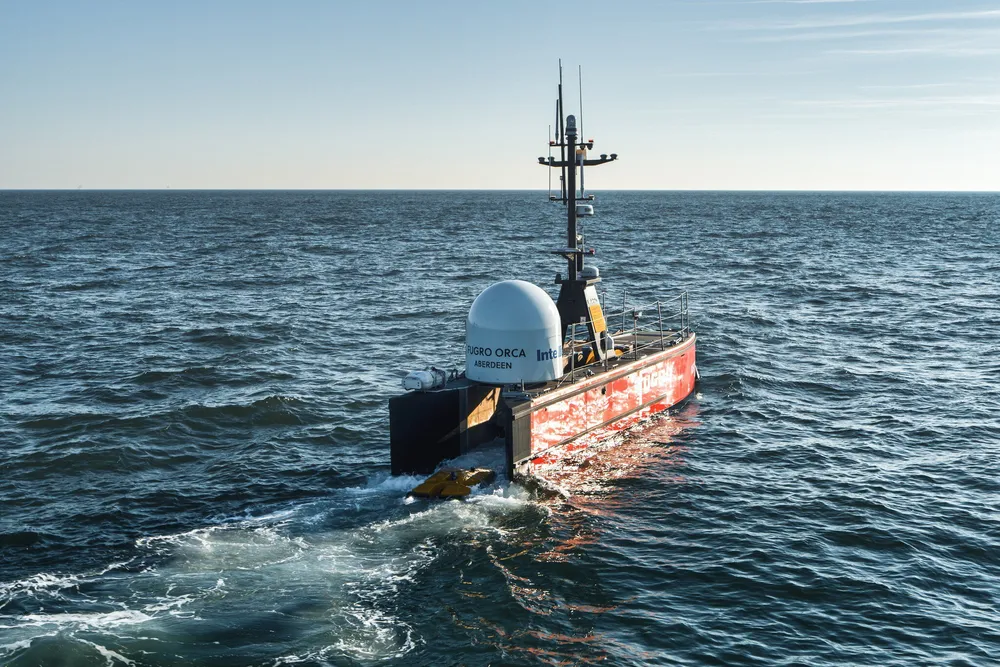'This is where we play': Fugro eyes new role guarding offshore power cables amid sabotage fears
Dutch company believes it can apply its expertise in survey work for offshore wind farms to protecting subsea power cables, with an executive saying surveillance and monitoring is 'our bread and butter'

As fears around grey zone warfare peak in Europe following recent anchor-dragging incidents, Dutch geo-data specialist Fugro is now turning its offshore wind surveying expertise to new work protecting the web of subsea power cables, says an executive at the company.
Although it is over three years since Russia launched its full-scale invasion of Ukraine, concerns in Europe around the vulnerability of its offshore power infrastructure have perhaps never been higher.
“We know that our technology and our data and our expertise is transferable to various spaces of the market. For example, maritime security and surveillance.”
“We can apply these capabilities to many different places.”
‘This is where we play, it’s our home turf’
Fugro had the chance to put this claim to the test through a recent partnership with the Dutch Ministry of Defence, for which it collected data and images on critical subsea infrastructure as part of a programme aimed at protecting North Sea infrastructure.
That work was essentially aimed at obtaining a “baseline measurement to prove the concept,” said Bijvank. “We were able to actually take this particular vessel out to a number of areas, do underwater investigation to prove that this can be done with this kind of technology.”
“We're taking lessons learned from that. And we're continuing the discussion to see what's next. But it's been a really, really nice step.”
The challenge of such monitoring and surveillance work is “to go somewhere where it's hard to go, which is offshore and subsea,” said Bijvank. “That's where we play. It's our home turf.”
Fugro has been out in the oceans for “decades” with an array of vessels and technologies, he said. “We can provide technology to go very close to what you want to see, whether that's on the surface or subsurface.”
“We can do baseline studies, we can map, we can monitor, we can model. We can make sure it's fully clear what's below there. And we can also see the anomalies from one time to the next.”
Fundamentally, if someone wants to know what’s going on in the oceans, Fugro can tell them, said Bijvank. “That's our bread and butter.”
How big an opportunity for growth is this for Fugro? “We do see opportunities in that area,” he said. “What I can say is: watch this space.”
While Fugro still needs to do a lot of work developing its offering in the security area, Bijvank said it holds “big promise” and is “moving really fast.”
There has he said been a “rapid development of the demand” for these services as the need for them has become “a lot more acute in a number of different countries.”
Asked about the recent anchor dragging incidents and broader industry concerns following Russia’s invasion of Ukraine, Bijvank said that these issues “went from a potential risk to what's seen now as an actual risk.”
“That risk requires mitigation. And that mitigation can come in a lot of different forms. We can provide some of the technology, some of the knowledge that we have to address some of these issues.”
There are several international collaborations ongoing in this area, he said. “Of course, we know Nato," but there is also the Seabed Security Experimentation Center (SeaSEC), a research centre for submarine infrastructure security that opened in The Hague in 2023.
The “target audience” for Fugro’s services in this area would, he said, be “governments, the security arms of governments, the navies of governments around Europe and even beyond.”
Automation will take employees ‘out of line of fire’
Technology is meanwhile transforming the Fugro fleet, said Bijvank, continuing that, “long term, we will do all our services from a remote operating centre onshore.”
“Some services will come much quicker than others, but we're already proving that we can provide a lot of these services from remote operating centres,” he said.
“Whether it's positioning work, rig moves, whether it's control of these vessels, more and more we believe we'll take people out of harm's way… so they won't be in the line of fire in harsher environments. They'll be working in the office.”
Taking people off boats and into offices is also crucial in the company’s push toward climate neutrality, he said, as smaller uncrewed vessels “use a lot less fuel than the larger vessels, up to 95% savings.”
“What's also interesting is an offshore work environment opens up the door to a much wider workforce because you don't need to be offshore to do the work. So, you can actually have a more regular work pattern, which allows a lot more people to actually take an interest in a career here.”
(Copyright)